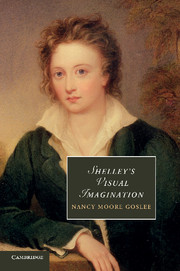Book contents
- Frontmatter
- Contents
- List of illustrations
- Acknowledgments
- 1 Introduction: text and figure
- 2 Mab's metamorphoses
- 3 “Hymn to Intellectual Beauty”: visual texts, invisible figure
- 4 “Clear elemental shapes”: communicating Greek liberty in Laon and Cythna
- 5 Anarchy's textual progress: representing liberty
- 6 Refiguring genre in Shelley's “Ode to Liberty”
- 7 Dispersoning Emily: drafting as plot in Epipsychidion
- 8 “Compelling / All new successions”: death and the poet's figurations in Adonais
- 9 The Triumph of Life: figure, history, and inscription
- Notes
- Bibliography
- Index
- CAMBRIDGE STUDIES IN ROMANTICISM
- References
Bibliography
Published online by Cambridge University Press: 05 March 2014
- Frontmatter
- Contents
- List of illustrations
- Acknowledgments
- 1 Introduction: text and figure
- 2 Mab's metamorphoses
- 3 “Hymn to Intellectual Beauty”: visual texts, invisible figure
- 4 “Clear elemental shapes”: communicating Greek liberty in Laon and Cythna
- 5 Anarchy's textual progress: representing liberty
- 6 Refiguring genre in Shelley's “Ode to Liberty”
- 7 Dispersoning Emily: drafting as plot in Epipsychidion
- 8 “Compelling / All new successions”: death and the poet's figurations in Adonais
- 9 The Triumph of Life: figure, history, and inscription
- Notes
- Bibliography
- Index
- CAMBRIDGE STUDIES IN ROMANTICISM
- References
- Type
- Chapter
- Information
- Shelley's Visual Imagination , pp. 250 - 267Publisher: Cambridge University PressPrint publication year: 2011



